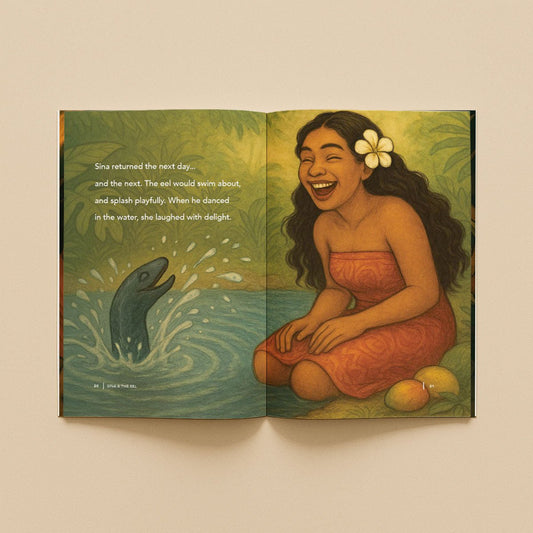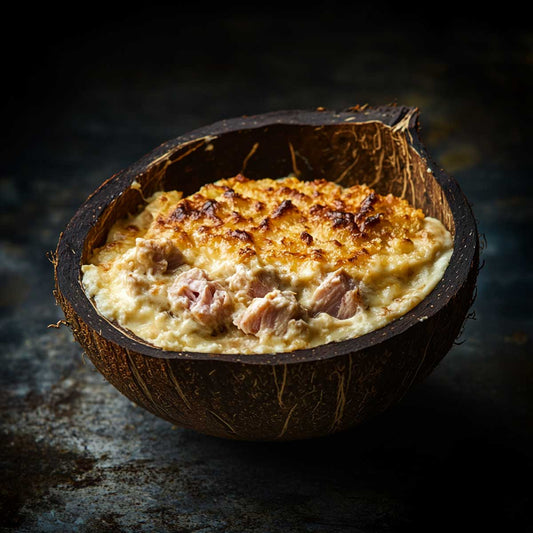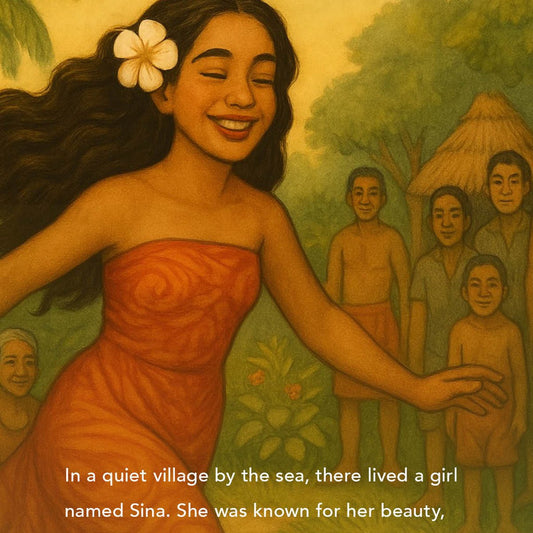When Is Samoan Independence Day? Celebrating Freedom and Fa'a Sāmoa
The question of Samoan Independence Day seems straightforward, but the answer holds a special place in history. While the nation’s official day of commemoration is **June 1st**, the true moment of liberation occurred on a different, cold winter day. Understanding the date requires appreciating the decades of struggle, cultural resilience, and global politics that led to the birth of the **Independent State of Samoa**.
This comprehensive guide delves into the historical timeline, the significance of the two dates, and the cultural spirit of the **Mau Movement**—a powerful non-violent force that shaped the nation’s destiny and continues to define **Fa'a Sāmoa** (The Samoan Way).
The Official Date: Why Samoa Celebrates on June 1st
The **Independent State of Samoa** (formerly Western Samoa) officially celebrates its independence every year on **June 1st**. However, this is an **observed date** chosen for practical and ceremonial reasons, rather than the actual date the country became free.
The Real Date of Independence: January 1st, 1962
Samoa was the **first Pacific nation** to gain independence in the 20th century. The transfer of power was finalized and Samoa became an independent sovereign state on **January 1st, 1962**. This date marked the end of the United Nations Trusteeship, which had been administered by New Zealand.
So, if the actual anniversary is January 1st, why the shift to June 1st?
- Weather and Logistics: January 1st falls in the middle of Samoa’s hot, wet, and often unpredictable **cyclone season**. Holding massive national celebrations, parades, and cultural performances during this time is logistically difficult and uncomfortable.
- Commemoration: To ensure the independence celebrations are held under the best possible conditions, the government formally moved the national holiday to June 1st, where the weather is generally drier and cooler.
This move allows the Samoan people, both at home and across the diaspora, to fully engage in a joyous and uninterrupted celebration of their national identity and freedom.
A Century of Struggle: The Path to January 1st, 1962
Samoan independence was not a gift; it was the result of over sixty years of foreign occupation and a powerful non-violent resistance movement. To truly honor Independence Day is to understand the two major colonial periods that preceded it.
The Tripartite Convention and the Division of the Islands (1899)
The Samoan archipelago was strategically important to several global powers. In 1899, the **Tripartite Convention** formally partitioned the islands:
- German Samoa (Western Samoa): Became a German colony.
- American Samoa (Eastern Samoa): Became an unincorporated territory of the United States, which it remains today.
It is the history of German Samoa (the Independent State of Samoa) that leads directly to the 1962 independence.
New Zealand Administration and the Influenza Epidemic (1914–1920)
At the start of World War I in 1914, New Zealand forces bloodlessly occupied German Samoa and took control. The New Zealand administration proved devastating in 1918 when a New Zealand vessel, the S.S. Talune, arrived carrying the deadly **Spanish Influenza**. Due to severe mishandling and refusal to quarantine, the disease was allowed to spread, killing an estimated **8,500 Samoans**—over 22% of the population.
This tragedy, combined with the lack of respect for Samoan traditional governance, fueled the growing resistance movement.
The Spirit of Resistance: The Mau Movement
The heart of Samoan independence lies in the **Mau Movement**, a non-violent political organization that means **“opinion”** or **“testimony”** in the Samoan language, but also carries the connotation of **“unshakeable adherence”** or **“power”**.
The Philosophy of Non-Violent Resistance
The Mau, comprised primarily of high-ranking chiefs (**Matai**) and traditional leaders, employed civil disobedience, boycotts, and non-cooperation to protest the New Zealand administration's rule. Their philosophy was inspired by the cultural value of **tautua** (service) to the community and a refusal to compromise the authority of the **Matai system** (the traditional political structure).
- Refusing Cooperation: Samoans refused to pay taxes, serve on government councils, or accept administrative posts.
- The Uniform: Mau members identified themselves by wearing a **lavalava** (traditional skirt) dyed the color of their movement, often a dark navy or purple, symbolizing their unity and dedication to **Fa'a Sāmoa**.
The Black Saturday Tragedy (December 28, 1929)
The Mau Movement’s story reached its tragic climax on **Black Saturday**. On December 28, 1929, Mau members marched peacefully in Apia to welcome two leaders returning to Samoa. The New Zealand military police opened fire on the demonstration.
The victims included **High Chief and Mau leader Tupua Tamasese Lealofi III**, who was shot while urging his followers to remain peaceful. His dying words—a call for peace over violence—became a rallying cry for the movement:
"My blood has been spilt for Samoa. I am proud to give it. Do not dream of vengeance, which belongs to God. If I die, peace must prevail."
This event solidified the Mau’s moral authority and galvanized international support. The New Zealand administration was condemned, and the eventual path to independence became inevitable.
The Road to January 1st, 1962: Transition and Triumph
Following the tragedy of Black Saturday, the Mau Movement continued its struggle, transitioning from a resistance group to a political force. After World War II, the United Nations established the **Trust Territory of Western Samoa**, placing it under New Zealand administration but with the explicit goal of preparing the islands for self-governance.
Self-Governance and the Treaty of Friendship
In the 1950s, constitutional development accelerated:
- 1954: The Legislative Assembly was reconstituted with a majority of Samoan members.
- 1959: Samoa achieved internal self-government.
- 1961: A national referendum was held, with an overwhelming majority of Samoans voting for independence.
Finally, at the stroke of midnight on **January 1st, 1962**, Western Samoa raised its own flag and became the first independent Polynesian state. This event was accompanied by the signing of a **Treaty of Friendship** between the newly independent nation of Samoa and New Zealand, formalizing a new relationship based on mutual respect.
New Zealand’s Apology
Decades later, in a powerful act of reconciliation, New Zealand’s Prime Minister Helen Clark issued a formal apology in 2002 to the people of Samoa for the two major wrongs committed during the administration:
- The tragic spread of the 1918 influenza epidemic.
- The tragic events of Black Saturday, including the killing of Tupua Tamasese Lealofi III.
This apology marked a final healing of historical wounds, underscoring the importance of respect and self-determination—the core values the Mau had fought for.
Celebrating Fa'a Sāmoa on June 1st
Today, the celebration of Independence Day on **June 1st** is a vibrant, week-long national festival that honors the country's rich culture and the sacrifices of its ancestors. The celebration is centered in the capital, Apia, and involves a mixture of traditional Samoan ceremony and modern governmental protocols.
The Ceremonial Highlights
- Flag Raising: The main event is held at the Malae o Tiafau (Parliament grounds) where the Samoan flag is raised as a national chorus sings the national anthem, "The Banner of Freedom."
- Fā'upu (Oratory): Independence is marked by powerful speeches and oratory from the Head of State, the Prime Minister, and dignitaries, all delivered in the rhythmic, respectful style of Samoan tradition.
- Parades and Marching: Schools, uniformed groups, and government departments participate in large parades, demonstrating the country’s modern unity.
- Siva and Sāsā (Dances): Cultural groups perform traditional dances, including the energetic **Sāsā** and the graceful **Siva**, showcasing the continuity of Samoan culture.
- Fire Knife Dance (Siva Afi): The dazzling and dangerous fire knife dance, originally a warrior’s demonstration, is a highlight of cultural performances, symbolizing the fiery spirit of the people.
The Independence Day celebration is the most important date on the national calendar, serving as an annual reaffirmation of **Fa'a Sāmoa**—the family-centered, service-oriented culture that survived, and triumphed over, colonial rule.
The Significance of Samoan Independence for the Pacific
Samoa's successful, peaceful path to independence in 1962 served as a powerful model for other Pacific Island nations. It demonstrated that self-determination was achievable and set a benchmark for sovereignty in the region.
- A Model for Decolonization: Samoa showed that organized, non-violent political action, rooted in traditional authority, could succeed against Western administrative powers.
- Cultural Sovereignty: The victory of the Mau was a victory for the **Matai system** and traditional governance, proving that Western-style democracy could be successfully integrated with deep-rooted Polynesian structures.
- Global Voice: Independence gave Samoa a voice on the global stage, allowing it to become a key member of the United Nations, the Commonwealth, and the Pacific Islands Forum.
Summary of Samoan Independence Dates
For those interested in history, it is useful to remember the distinction between the two dates:
| Date | Significance | Context |
|---|---|---|
| January 1st, 1962 | The Actual Anniversary | The moment Samoa formally became the first independent Pacific nation, concluding the UN Trusteeship. |
| June 1st | The Official Observed Holiday | The date chosen annually for national celebrations due to favorable weather and logistical reasons. |
Whether you celebrate on January 1st or join the festivities on June 1st, Samoan Independence Day is a time to reflect on a remarkable journey—a testament to the resilience, the unity, and the enduring power of the **Fa'a Sāmoa**.
***
Explore our collection of traditional Samoan clothing and cultural items to celebrate Samoan Independence Day in style. Shop Now!















